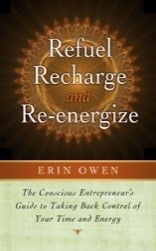Contributor: Jacob Adler
Work and Life is a radio program hosted by Stew Friedman, director of the Wharton Work/Life Integration Project, on Sirius XM’s Channel 111, Business Radio Powered by Wharton. Every Tuesday at 7 pm EST, Stew speaks with everyday people and the world’s leading experts about creating harmony among work, home, community, and the private self (mind, body, and spirit).
Gopi Kallayil is a Wharton alum and Chief Evangelist, Brand Marketing at Google. Before joining Google, Gopi was on the management team of two Silicon Valley venture funded startups and a consultant with McKinsey. Gopi earned his Bachelors degree in electronics engineering from the National Institute of Technology in India and his Masters in Business Administration degrees from the Indian Institute of Management and from Wharton. He spoke with Stew about his new book, The Internet to the Inner-Net: Five Ways to Reset Your Connection and Live a Conscious Life.
The following are edited excerpts of their conversation. Full podcast.
Stewart Friedman: How did you get here – to be at Google – the nexus of technology – also connected to eastern thought and practice?
Gopi Kallayil: 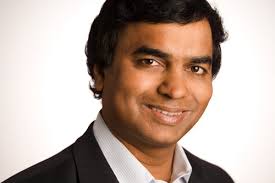 It is a long story, but the short version is just the hunger and thirst to see much of the world and experience the fullest of life on the planet. One of the paths that many people choose, especially from that part of the world [India], is through education and professional life. Starting from a modest family background, the search for education, business school, engineering school, and then professional expansion of career, eventually directing my sights at coming to the U.S. and to graduate school here and working in Silicon Valley, is what led to that journey and why I had Hong Kong as an in-between stop. I would say that was really the end goal in picking what I thought would be a great life experience both in terms of educational and professional growth and eventually working in the Silicon Valley ecosystem. I knew early on that the field of technology was where I wanted to pursue my career.
It is a long story, but the short version is just the hunger and thirst to see much of the world and experience the fullest of life on the planet. One of the paths that many people choose, especially from that part of the world [India], is through education and professional life. Starting from a modest family background, the search for education, business school, engineering school, and then professional expansion of career, eventually directing my sights at coming to the U.S. and to graduate school here and working in Silicon Valley, is what led to that journey and why I had Hong Kong as an in-between stop. I would say that was really the end goal in picking what I thought would be a great life experience both in terms of educational and professional growth and eventually working in the Silicon Valley ecosystem. I knew early on that the field of technology was where I wanted to pursue my career.
SF: I’d love to hear a bit more about how you knew that, but first let me ask what was it that you learned from your early family life? It’s something that’s important to us all but you write so clearly about that. What was it that your parents and your grandparents instilled in you that gave you this sense of being on a quest for useful knowledge that took you to far-off places? How did they teach you that?
GP: I don’t think they specifically taught me a technique, but I do know that they came from a set of limited opportunities and they had to step outside of that and be adventurous. In a classic tale that is retold in many families, my dad leaves his family lived in a rice-farming community and with no formal education, no qualifications, no real skillset, he goes on and builds his career in small towns and other places around India. Eventually, and this proves his street-smarts, he went on to speak nine languages, which he knew would connect him to people. I would say a skill I learned from him was how to connect to people. That emotional intelligence or social intelligence is a huge driver of success. He took himself out of his comfort zone and to new environments. You can learn and teach yourself skills and there is a large body of human knowledge out there that you can tap into and the more you learn and apply it, the more you thrive in whatever you choose to do. But along the way, I think one key piece of wisdom that I picked up was that so much of our life is based on interdependencies with other people and therefore the network of relationships you build is so crucial in how you do in whatever you choose to do professionally.
SF: He taught you a lot through his own example about how to learn and continue to grow your own capacity through meaningful connections to people who are different than you.
GP: Absolutely, and that’s why as much as the internet is a great technology to connect with information and objects and people, there is this whole network of relationships you have to establish with other people at a very human level. That was one of my biggest takeaways, that in the midst of all the technology, our social connections with other people are fundamental and that is never going to change.
SF: So you had an early grasp of the importance of technology, and you gravitated to that field. How did you know that was something that was going to be important for you and for the whole world in terms of the emergent digital age?
GP: I wish I could say that I had a very clear idea of how the world would look, but I can safely say that even five years ago, I didn’t have an idea of how things would evolve. When I was at Wharton, the internet was just beginning to get popular.
SF: You were Class of 1998, let me just clarify that.
GP: Last January, for example, we hit an inflection point where the number of mobile devices in the planet is estimated to have exceeded the number of human beings, 7.2 billion estimated mobile devices. The fact that we would now carry in our pockets a handheld technology the size of playing cards that allows you to listen to music, order milk, check in for your flights, and take photographs…I would never have predicted that. [phone connection to Gopi got cut off]
SF: How ironic, that we were talking about basic human connection and the unfathomable power of this technology, and then we lose that connection. It’s great to have you back.
GP: It’s a humbling reminder that anything can get disrupted. Part of what these practices teach you to do is to be unflappable through the course of it all and bounce right back.
SF: That’s what we’re trying to do right now. You were talking about how much has changed over the last five years and that the transformation of our lives in this digital age that is so rapidly advancing is something you couldn’t have predicted. How can that be, that even over such a short period of time things could change so far, so fast?
GP: It is remarkable, and I think it’s a culmination of several factors. The first and foremost is there is this amazing energy that is manifest among human beings in terms of being innovative and creative and looking at different problems and situations and how human beings work and play, and trying to come up with very, very creative solutions. One example of that is Uber, as the story goes, one was frustrated he couldn’t hail a cab in the rain and saw a lot of cars going by in the same direction and imagined what if I could somehow communicate with that person and say give me a ride, since you’re going in that direction, and I’ll make a small donation. Out of that, just trying to solve that simple problem of occupying an empty seat in a car going in your direction is what led to this amazing service called Uber that more and more people are using and you can see popping up in more cities. That’s what I mean by there is this tremendous energy of human beings looking at these kinds of things and saying let me come up with a creative way to solve the problem. But supporting all of that, there is this powerful, underlying platform, a collection of technologies, we broadly call it the internet, backed with many other pieces from giant databases of information that is available, open sharing of standards and information, many things I can point to, that was simply not available to us three, four years ago. I think we’re just taking advantage of all of those pieces and there is this creative outpouring of fantastic solutions to various problems that human beings are having.
SF: It’s such an exciting time, and yet, it’s for many people a frightening time. Your wonderful book The Internet to the Inner-Net helps to remind us and really provides some guidance about how to continue to stay human in the context of the digital revolution. What do you mean by the inner-net?
GP: It is a play on the word, one of the most iconic words of our times, the internet, which most people understand. It is this collection of technologies that connects us to all of the world’s information, other people, other objects. In the midst of all this, I wanted to send a message that the most important connection that all of us have is the one with ourselves. As much as we get enamored with these amazing technologies, there is one technology that you and I and all of our listeners get to use every single day. I playfully refer to it as a technology, but in some ways I think of it as the most sophisticated, most complex technology that is known to human kind, and that is right there inside of our body. It is an important technology, if you’ll allow me to call it so. I see this highly complicated, highly sophisticated brain. We’ve barely even began to understand it yet all we have to do is watch a three- or four-year-old learn language and learn rules of grammar before being taught formal grammatical constricts. We just watch a toddler pick up language and that’s fascinating. How does the brain work? You realize that you are dealing with sophisticated computers and neural networks that you can’t imagine. All of our life experience is filtered through this particular technology, the inner-net, to use that word. If it’s a piece of food you eat, or if you’re trying to process this conversation you and I are having, or listening to a piece of music and that is making an imprint on your mind and your emotions, all of that is filtered by this inner technology called the inner-net. Therefore, understanding it, nurturing it, having a relationship with it, knowing how to fully use it is an important predicate on the quality of our life.
SF: Absolutely, and of course that is the question for all of us. We all need to have as deep and rich an understanding of who we are and our connections to the rest of the world. Tell us a little more about these five ways that you write about in The Internet to the Inner-Net that help people develop that kind of consciousness and capability in today’s digital environment. And by the way, I think the analogy that you use is a lovely one and helps to bring it home. The five ways, briefly, what are they?
GP: I thought of how do you incorporate these practices, because the way to find that moment to connect with these inner technologies is known to humankind and there have been elaborate practices and wisdom traditions that have been developed — meditation and various other practices. But I kept asking myself how can I make it all work for me in a way that I will actually stay consistent with, and I came up with these five rituals that I practice on a regular basis.
The first one, I call it focus on the essential, meaning know clearly what is most important to you. If you know clearly what is important to you, you know what to say yes to and what to say no to. In living the kind of frenzied life that we live now with technology surrounding us, you’re constantly being pulled in different directions. If you know what is essential, you know how to say yes to a few things and say no to most other things. That’s one of the five rituals I tell people to be clear about it. In my own case, there are five essentials that I have come up with, and without getting into the details, I know what my top priorities are and I focus on them. I focus most of my energy and time on those.
The second ritual is as simple as do one thing at a time. It is incredible, the extent to which we go on in modern life thinking we’ll be the first generation in history to be able to do five things at the same time and be able to successfully execute. The thing with our brain is it’s extremely good when it’s focused on one task and if you ask it to do five things, it falls apart. Even with all of these people who have these debates about multitasking, and I ask this simple question: If you had to go for open-heart surgery, how would you feel if your surgeon said ‘hey, I’m also interested in baseball and the stock market, so in the operating room I’m going to have the TV turned on to two channels and simultaneously keep my eye on the game and the stock market.’ Would it make you uncomfortable? Where you see examples of peak performance, you don’t have multitasking. If you look at a musician, they never sit there rehearsing a piece while still watching something on TV. One thing at a time, simple idea, but it seems to help you get more things done.
The third thing I talk about is pick whatever it is that allows you connect to the inner-net, however broadly it is you may define it for yourself. It may be going out for a walk in the park or playing with your baby or reading poetry. For me it’s yoga and meditation. I say commit to just one minute every single day, the idea being bring it out the lowest threshold you can’t say no to. Most people understand the wisdom behind it, but they’ll tell you they don’t have the time, they’re too busy or traveling. I stumbled across this idea of committing to just one minute a day when I told a good friend of mine at Google of my own struggle of finding a daily practice around yoga and meditation and he looked at me and said: “Gopi, why don’t you start with one breath?” Even if you’re trying to meditate for one full hour, it’s really 600 breaths strung together, it’s just one breath to get to the second and third. Since I’m a compulsive, neurotic overachiever, I said, “I can do better than that. I am going to go a whole minute!” That was the genesis of that.
SF: One minute a day to connect with what is inside of you.
GP: At least. I’m not saying stop at one minute, but at least one minute. The idea is there are 1,440 minute in a day, pick one to at least nurture some connection with your inner-net. What happens, at least in my case, now a week went by, two weeks went by, and for the first time in my life I could look back and say I did my practice every single day, even if it was for just a minute. But at least you feel you have integrity towards it. What came next was the delightful surprise, too, and that was on most days I would sit for a minute on the cushion meditating or commit myself to one minute of my yoga practice, coupled with some salutations, and the minute it’d go by, the next thing I knew my mind would be saying this is so wonderful, why rush to go do something else? What else can be more important? One minute can easily grow into five minutes and 10 minutes, so that was a way I could work over the hurdle.
The fourth ritual I talk about is among the 168 hours in your calendar, which we all feel gets hijacked by somebody else’s schedule, at least pick one non-negotiable slot every single week, once a week at the same time when you will commit to something that nurtures your inner-net. In my case, Monday at 5:30, I teach the Yoglers [yogis at Google]class and for nine years, if I am in Mountain View, I never missed a class.
SF: What is the last practice, just in brief?
The fifth one is even as I use social media to connect with thousands of other people, make sure you take time to friend yourself. Listen to the tweet from the heartbeat, listen to the chat request from your brain, and the status update from your body.
SF: How do you do that?
GP: By taking that one minute, at least to begin with, and finding whatever it is, that practice for inner-connection. For me, it is that time at the yoga mat or meditation or journaling or doing a gratitude practice, that allows me to step away from the noise and frenzy and the technology around me and refocus on what’s going on in my mind and my body and connect with my inner-net.
SF: It seems so simple, doesn’t it? And yet that’s sort of the point, isn’t it?
GP: It is very simple, but it is very hard to practice. That’s why you call it a practice, it takes an entire lifetime and a lot of work and mastery, but enjoy the journey of the discovery. You’ll fall off the wagon and fail, I fail every day, but just getting back and trying again and just making one tiny step forward is itself part of the process, part of the joy of establishing that connection.
For more information about Gopi Kallayil and his new book, visit his web site Kallayil.com
About the Author
Jacob Adler , W’18, is a sophomore at Wharton and a contributor at The Daily Pennsylvanian, numberFire, and Fake Teams.
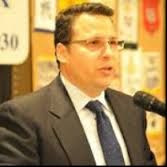 There was both a conscious and unconscious evolution. I went to college at Johns Hopkins, and it was very stressful. After my freshman year, I felt that some of the calm that I’d entered college with had dissipated. At the time, my brother lent me some books on meditation. When I tried to do it, I found it quite alarming! Because even in the quarter of a second that I was asked to focus on my breath, I recognized that my mind wandered. It was the same sense of alarm you’d get when riding a car with a driver who takes their eyes of the road to talk to you. If I couldn’t pay attention under perfect conditions, what would happen when I was under stress?
There was both a conscious and unconscious evolution. I went to college at Johns Hopkins, and it was very stressful. After my freshman year, I felt that some of the calm that I’d entered college with had dissipated. At the time, my brother lent me some books on meditation. When I tried to do it, I found it quite alarming! Because even in the quarter of a second that I was asked to focus on my breath, I recognized that my mind wandered. It was the same sense of alarm you’d get when riding a car with a driver who takes their eyes of the road to talk to you. If I couldn’t pay attention under perfect conditions, what would happen when I was under stress?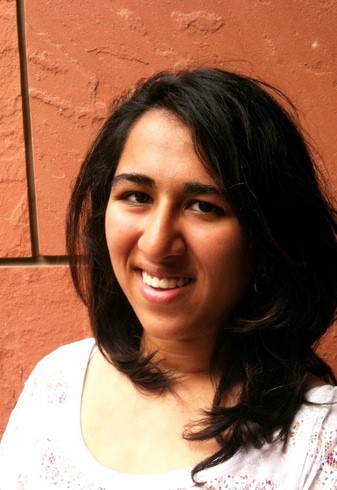 is a junior in the Wharton School studying Management and Marketing and OPIM with an International Relations minor. She also serves as a vice president for the Work/Life Integration Project Student Advisory Board.
is a junior in the Wharton School studying Management and Marketing and OPIM with an International Relations minor. She also serves as a vice president for the Work/Life Integration Project Student Advisory Board.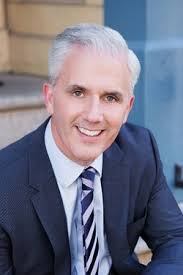 Like many people, my first real introduction to mindfulness was a book Jon by Kabat-Zinn called Wherever You Go, There You Are. It is comprised of little chapters and essays on mindfulness, and he has such a wonderful way of making it conversational and thought-provoking. In the nineties, that was my morning book. For a couple of years, I would read parts of it to start my day, and then I would contemplate what I read and usually journal a bit. That was the beginning for me.
Like many people, my first real introduction to mindfulness was a book Jon by Kabat-Zinn called Wherever You Go, There You Are. It is comprised of little chapters and essays on mindfulness, and he has such a wonderful way of making it conversational and thought-provoking. In the nineties, that was my morning book. For a couple of years, I would read parts of it to start my day, and then I would contemplate what I read and usually journal a bit. That was the beginning for me.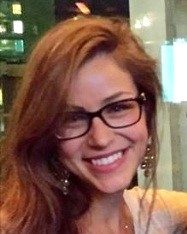 is an undergraduate senior in the Huntsman Program in International Studies and Business at Penn focusing on Management and Latin America
is an undergraduate senior in the Huntsman Program in International Studies and Business at Penn focusing on Management and Latin America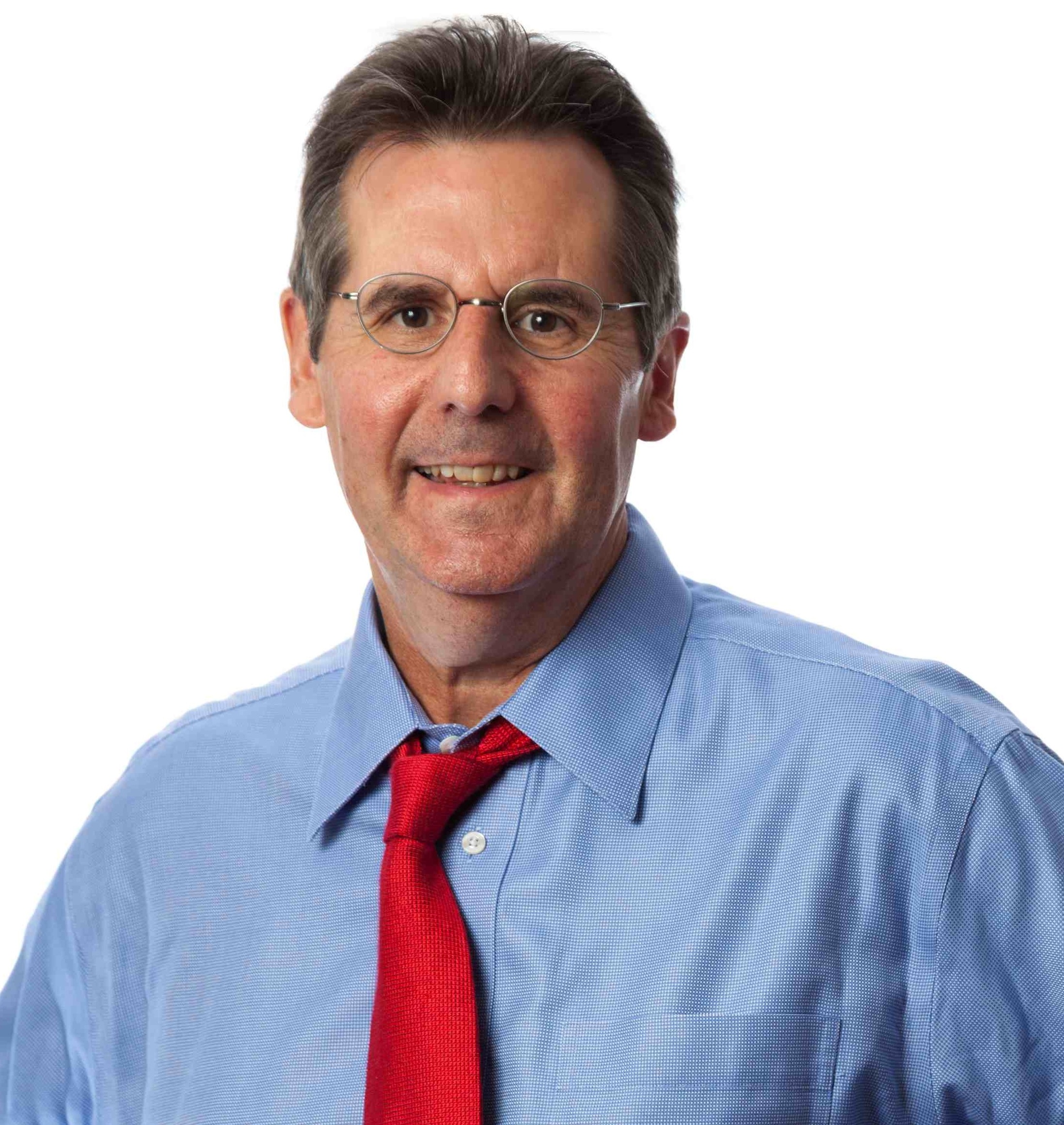 Guts, gumption, and determination to beat the odds. Courage, standing up for what you believe in and your people. I always liked the word from movies of 30’s and 40’s: “That boxer, he’s got moxie.” It’s an inner resolve. When I watched the recent economic crisis and leader after leader didn’t know how to react, didn’t know how to deal with adversity, I began to think about this as a leadership challenge.
Guts, gumption, and determination to beat the odds. Courage, standing up for what you believe in and your people. I always liked the word from movies of 30’s and 40’s: “That boxer, he’s got moxie.” It’s an inner resolve. When I watched the recent economic crisis and leader after leader didn’t know how to react, didn’t know how to deal with adversity, I began to think about this as a leadership challenge.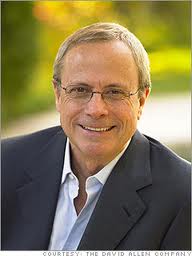 The one sentence version is both very simple and practical and pretty sublime. It is: You need to pay appropriate attention to what has your attention; otherwise, it will take more of your attention than it deserves. What has your attention? How many things are on your mind? “I need to get cat food.” “I need to find God.” “I need a career.” “I need to talk to my aunt.” “I need to answer those ten emails.” If you don’t handle those things appropriately, you are inappropriately engaged with your email, with your cat, when you are at work, or with your family. Here’s the big secret: getting things done is not about getting things done. It’s about being appropriately engaged with your life. I figured out the algorithm for being appropriately engaged. There are five steps. First, you have to capture the idea, identify what’s on your mind and record it; do something to get it out of your head. Second, decide what it means to you and what you’re going to do about it. Third, park the results of that decision somewhere you’ll see them at the right time. Fourth, look at the results of those decisions – the things you need to get done – when you need to get them done. And fifth, engage appropriately with doing those things. It isn’t rocket science, but it is something most people haven’t yet truly implemented.
The one sentence version is both very simple and practical and pretty sublime. It is: You need to pay appropriate attention to what has your attention; otherwise, it will take more of your attention than it deserves. What has your attention? How many things are on your mind? “I need to get cat food.” “I need to find God.” “I need a career.” “I need to talk to my aunt.” “I need to answer those ten emails.” If you don’t handle those things appropriately, you are inappropriately engaged with your email, with your cat, when you are at work, or with your family. Here’s the big secret: getting things done is not about getting things done. It’s about being appropriately engaged with your life. I figured out the algorithm for being appropriately engaged. There are five steps. First, you have to capture the idea, identify what’s on your mind and record it; do something to get it out of your head. Second, decide what it means to you and what you’re going to do about it. Third, park the results of that decision somewhere you’ll see them at the right time. Fourth, look at the results of those decisions – the things you need to get done – when you need to get them done. And fifth, engage appropriately with doing those things. It isn’t rocket science, but it is something most people haven’t yet truly implemented. received her MBA from The Wharton School in 2014
received her MBA from The Wharton School in 2014 Business Radio Powered by The Wharton School, Stew Friedman continued the discussion he began with Brett Hurt, on the seemingly-paradoxical benefits of slowing down at work in order to get more done, in a conversation with Erin Owen. Erin Owen is a performance breakthrough coach, which she describes as “a combination of an Eastern guru, a business coach, a life coach, a health coach, and a time management master.” She helps professionals and entrepreneurs apply the wisdom of ancient Eastern philosophical and energetic practices to modern, Western ideas of performance.
Business Radio Powered by The Wharton School, Stew Friedman continued the discussion he began with Brett Hurt, on the seemingly-paradoxical benefits of slowing down at work in order to get more done, in a conversation with Erin Owen. Erin Owen is a performance breakthrough coach, which she describes as “a combination of an Eastern guru, a business coach, a life coach, a health coach, and a time management master.” She helps professionals and entrepreneurs apply the wisdom of ancient Eastern philosophical and energetic practices to modern, Western ideas of performance.